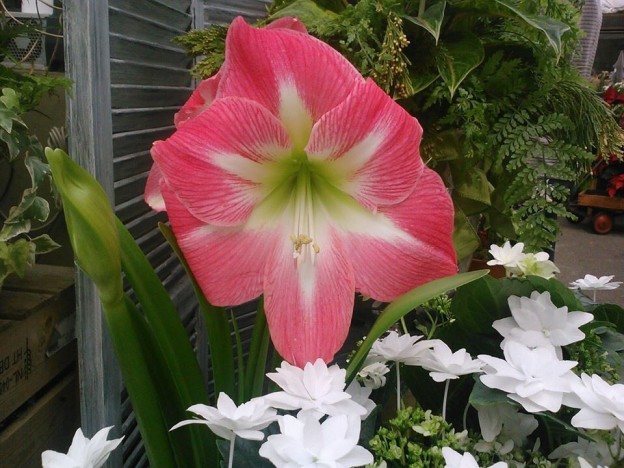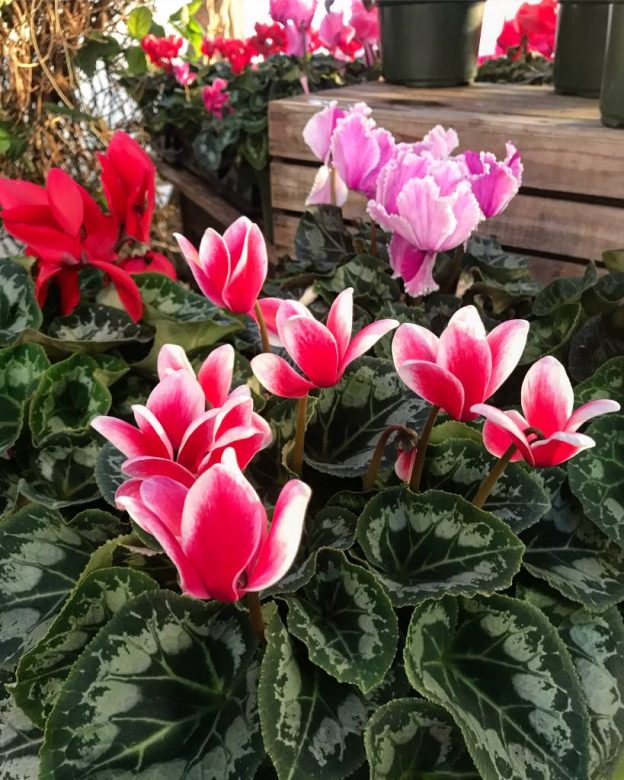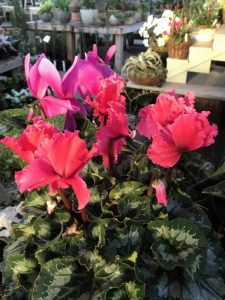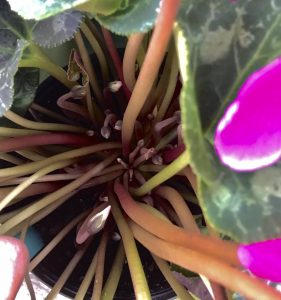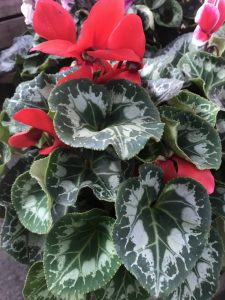Amaryllis, unquestionably, are one of the most dramatic and elegant of flowers. That bold, beautiful blooms of all colors and sizes can emerge from such a drab, unassuming brown bulb is amazing. They are truly a wonder of nature!
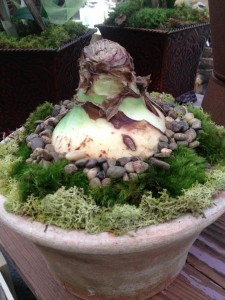
Decorative moss and pebbles dress up this amaryllis bulb…

Amaryllis in the greenhouse…
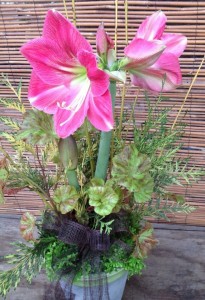
Amaryllis arrangement…
So, you want to purchase an amaryllis bulb (or more than one) for yourself or as gifts for friends? First, you need to know that the size of the bulb corresponds to the size and amount of blooms. Their sizes range from “miniature” amaryllis bulbs to jumbo amaryllis and there are midsize bulbs as well.
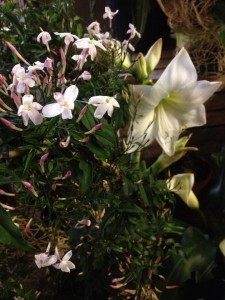
Large blooms of this amaryllis offer a contrast to the fragrant jasmine…
Beware of gift boxes and bags already prepackaged. I’ve stopped carrying them because, inevitably, the bulb begins to grow in the box prior to purchase. Believe me, there’s nothing sadder than an amaryllis, stem bent toward the light, growing sideways out of a box. It’s just not right!
Potting them up is quite simple. Find a pot that is no more than an inch or so wider than the bulb and fill it with good quality potting soil (We use Fafard.) about half way up the pot. Next, position the bulb on the soil, pushing the roots firmly in place. The “shoulder”, or widest portion of the bulb, should be above the soil. Fill in around the bulb, push down gently, and water with some of the remaining manure tea.
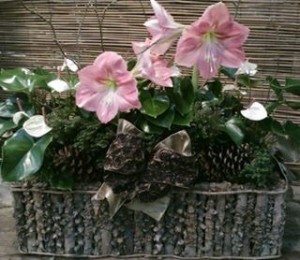
The hardest part is the wait for the bud to begin to emerge. It may take just a few days in a warm, sunny room, but it can just as easily take longer. Amaryllis don’t always cooperate with our timetables. Take a look at this “Holiday Flowers” post from last year and you’ll see what I mean. When you do see new growth starting to emerge, begin to water just so the soil stays slightly moist and watch the magic happen! You can also “dress up” the top of the soil with decorative moss or pebbles. 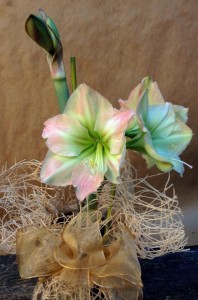
In bloom amaryllis can get quite tall and will usually benefit from some type of staking. In addition to simple bamboo stakes, stems of red and yellow twig dogwood, birch, curly willow, or branches from your landscape can be used. Insert the staking material at the edge of the bulb and tie it with raffia or ribbon.
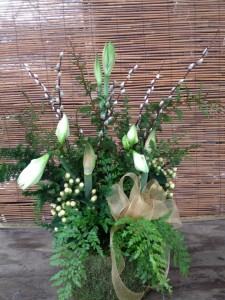
Amaryllis, budded, with ferns, and stems of pussywillow…
The pictures here show what we’ve done in the past using amaryllis. They make wonderful presents during the holiday season and simply watching the bloom stalk grow taller and the enormous buds begin to open is a gift in itself!
There’s also a video we’ve done on amaryllis available to watch on the Oak Street Garden Shop YouTube channel. If you enjoy it, subscribe for more!
In addition to bulbs that are available for you to plant, we also will be receiving many amaryllis already potted up from our growers. So, if you’re in the Birmingham area, there’s no excuse not to have one of these holiday favorites!

